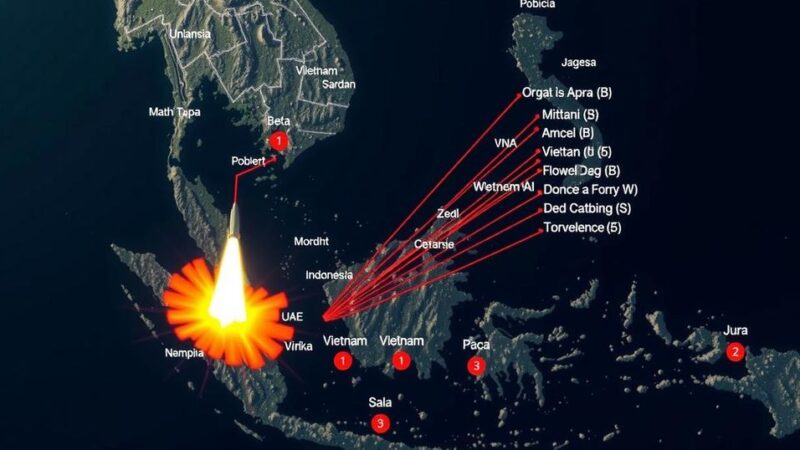An earthquake of magnitude 4.6 hit Tajikistan at a depth of 80 km, marking the eighth quake in 30 days. The region is highly seismically active, with a majority of its population residing in high-magnitude seismic zones, raising concerns about safety and economic impact.
An earthquake of magnitude 4.6 struck Tajikistan at a depth of 80 kilometers, with its epicenter located near the Garam Chashma hot springs in the Pamir Mountain range. The coordinates for this seismic event were reported as latitude 37.21 N and longitude 71.49 E. This earthquake marks the eighth occurrence in Tajikistan within a 30-day span, according to the National Centre of Seismology (NCS).
Tajikistan is situated in a seismically active region, as indicated by the World Bank. The country lies predominantly within high-magnitude seismic zones, with 50% of its territory classified in an 8-9 magnitude zone. This geological susceptibility is especially concerning as a majority of the population, approximately 73.7%, resides in these high-risk areas. Over recent years, seismic activities have led to devastating consequences for both human lives and the nation’s economy, emphasizing the urgency for disaster preparedness and resilience strategies.
In conclusion, the magnitude 4.6 earthquake in Tajikistan underscores the ongoing seismic threats faced by the region, where a significant portion of the population lives in high-risk areas. Continuous monitoring and preparedness are crucial, as recent events demonstrate the potential for substantial impact on communities and economic stability. Efforts must be strengthened to mitigate the risks associated with living in such a seismically active environment.
Original Source: m.economictimes.com






